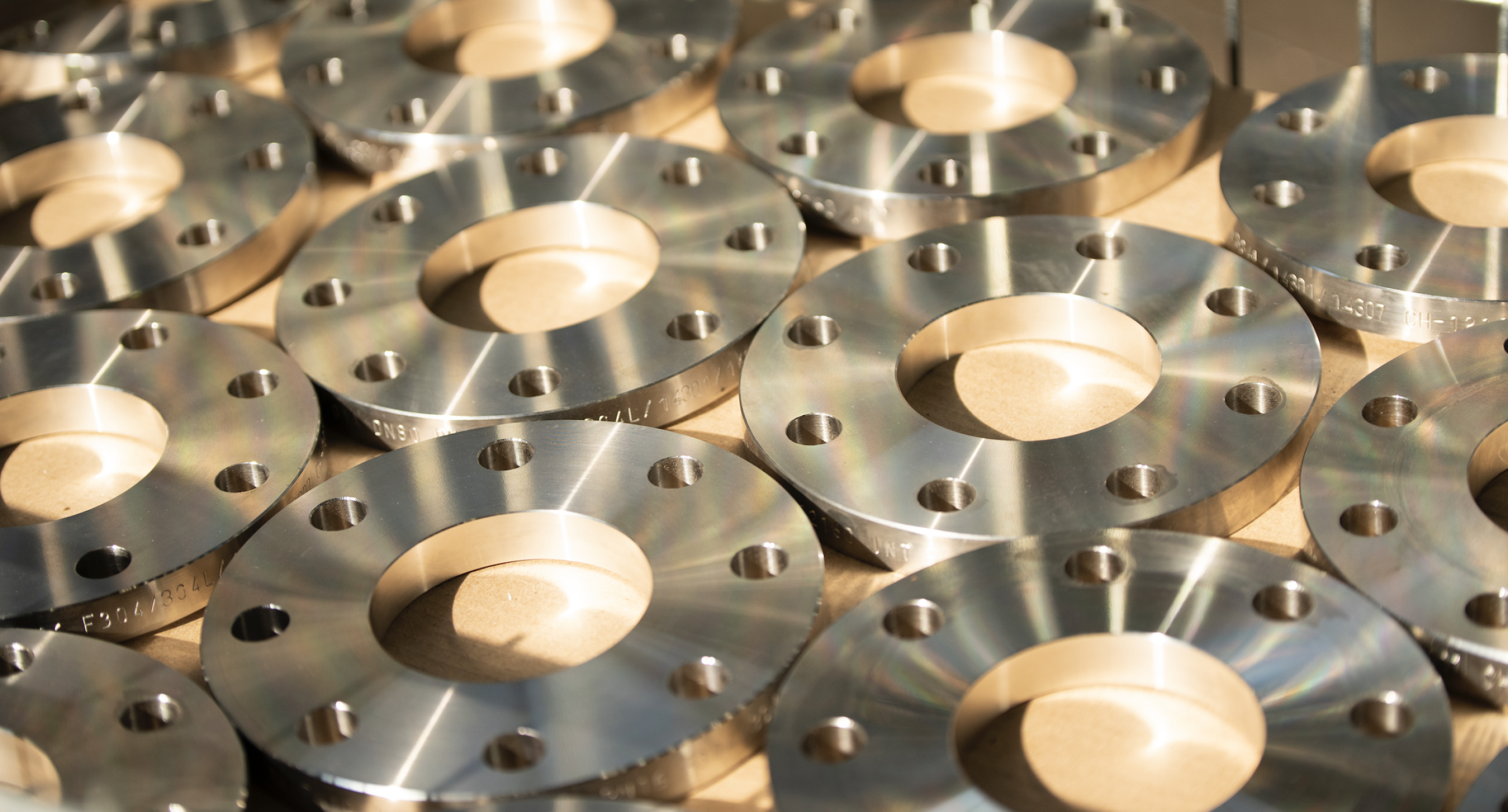In the world of hydraulics and mechanics the term flange is very widespread and identifies components that act as joining elements between pipes or shafts. Even though they are geometrically very simple components, they must have suitable characteristics both from a structural and functional point of view.
Among the fundamental requirements, we can list:
- resistance to pressure: being in operation with hydraulic fluids, they must be able to resist even considerable pressure without showing failures or deformations which could prove critical for application purposes;
- compliance with dimensional tolerances: being part of even complex assemblies, compliance with general and specific tolerances is required, guaranteeing assembly and avoiding unwanted interference;
- resistance to mechanical and environmental stress: this characteristic, especially as the effective time in operation prolongs, takes on a significant value because efforts, whether impulsive or constant, can lead to a progressive loss of functionality with more or less serious consequences.
The differences between forged and micro-cast flanges
As can be seen from the names, the substantial difference between these two
types of flanges derives from the production methodology of the component itself.
1. The forged flanges are obtained through a plastic deformation process which leads to obtaining the desired morphology and dimensions through various deformation steps. The presses chosen for the creation of the component starting from the initial bar are fundamental.
2. Micro-cast flanges, on the other hand, are made through a casting process with the material being brought to a molten state before being solidified in order to obtain the desired shape. The preparation phases of the ceramic shell and the cleaning of the product at the end of the solidification process are fundamental.
Having clarified the production technique, which represents the main discriminating factor, it is possible to delve deeper into some aspects:
ù
A. Both types of flanges are made in order to comply with the main regulations of the sector, such as the UNI EN 2278:2016 regulation;
B. The tolerances obtainable with the two processes are different: forging often requires a transition to mechanical processing which, however, can be avoided with a good micro-casting technique. In fact, the latter allows us to obtain "near-net shape" products, which means substantially with the required final morphology.
C. On the other hand, micro-casting, like all casting processes, brings with it a solidification phase which must be appropriately studied in order to avoid the creation of porosity or inclusions, even if not visible from the outside, which can affect the characteristics of the material and of the flanges themselves.
The preliminary study of all the characteristics of the UNI EN 2278 flanges allows us to evaluate their strengths and weaknesses and allows us to evaluate any critical issues in advance, looking for a solution.
